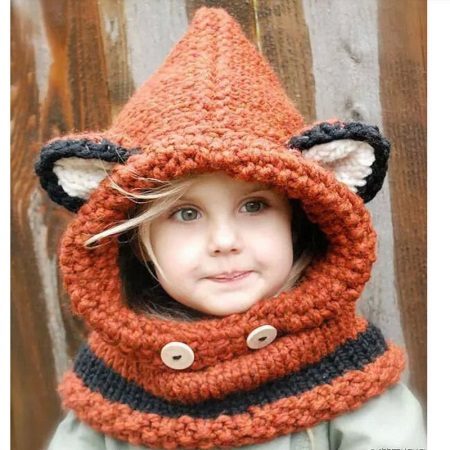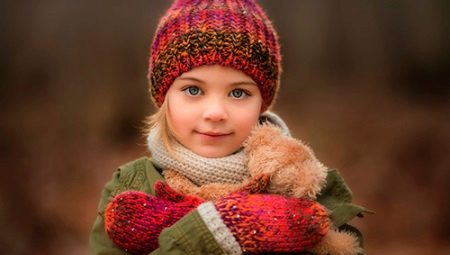Children's hat ... A phrase that evokes a strong association in the older generation with only two or three types of these children's hats. Two-color woolen, with a toe - autumn-spring version, on top of which, in the cold season, another one was worn - a round cygeic or luxurious rabbit, over which an elastic was stretched, "so as not to puff in the ears." There was also a "boy" option - a cap with earflaps from the same brown cygheika. The children looked like each other, but they didn’t puff in their ears - that's for sure.
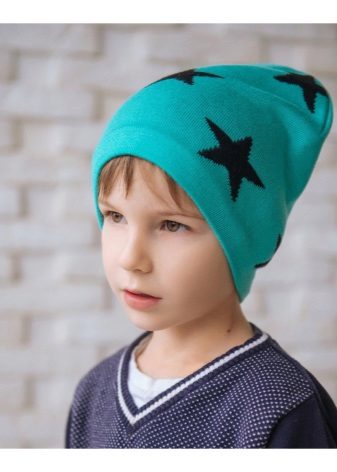
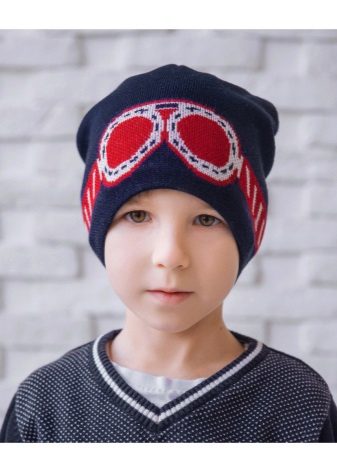
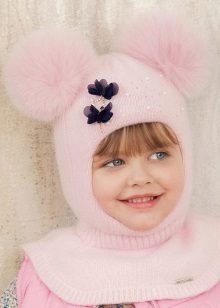
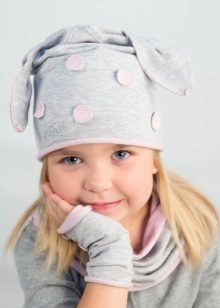
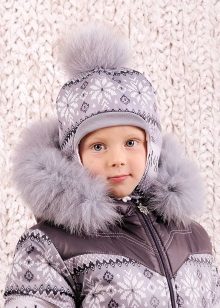
The current generation of children is more fortunate modern children's hats perfectly combine beauty and originality all with the same care for the warmth and health of babies, not really babies and not babies at all.
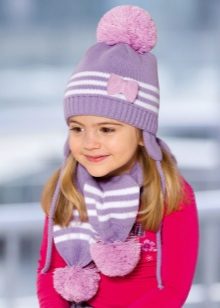
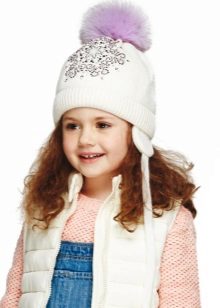
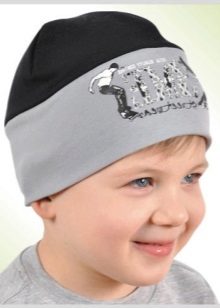
Models
The range of modern children's hats is so wide that it is difficult to list all the options, but it is easy to find the one that suits both the mother and her child.
-
Hat with ears. What could be prettier and tougher than a baby on a walk? Only a baby in a hat with ears - kittens, cubs, frogs ... They are also someone's babies. What can we say about babies, if a hat with ears can easily be found on a teenage girl, and sometimes even on a very adult girl. For example, at Paris Hilton. Apparently, in her heart she is still a baby.
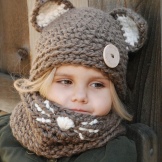
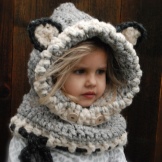
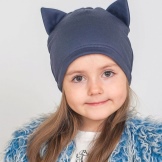
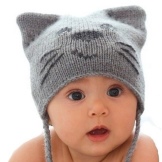
-
Hat with pompom. With big. Or with two, but small. Or even three or four. At the top or hanging from a drawstring. A true classic of the genre, never out of fashion. Recently, one big fur pompom on a knitted hat has become fashionable.
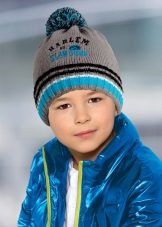
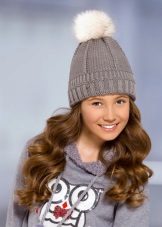
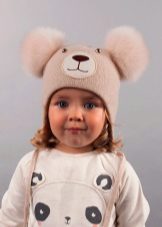
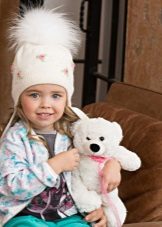
-
Hat with ear flaps. In the 80s of the last century, the male model of such a hat was extremely popular with high school students, both for girls and boys. Today’s earflaps are completely different from those of the gray-white rabbit.They are bright or delicate, with soft fluffy colored fur, with a fabric top with funny prints or even knitted.
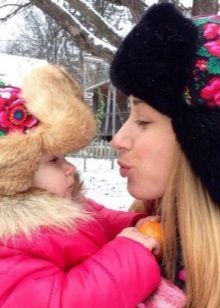

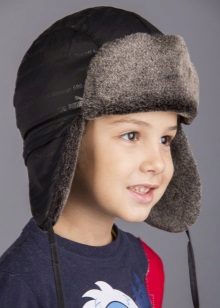
-
Helmet. A model that combines both a hat and a scarf. Very convenient for almost independent children attending kindergarten and dressing on their own. In such a hat you can not worry about the fact that the child will forget to put on a scarf or somehow tie it incorrectly. In such a cap, which provides a snug fit to the head and a closed throat, you can not worry about the baby's health. However, it should be mentioned that the children themselves do not always like this model of hats.
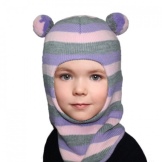
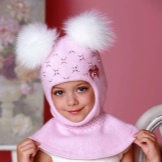
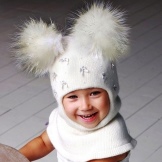
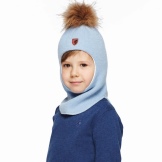
-
Cap-hood. Infrequent, but wonderful model of a children's headdress for girls. In general, the classic hood is a hybrid of a female cap and hat, tied with ribbons under the chin, this option can be seen in historical tapes. Your baby will look all the more interesting in such an original version of the cap.
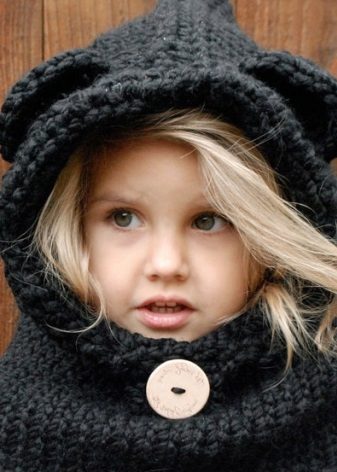
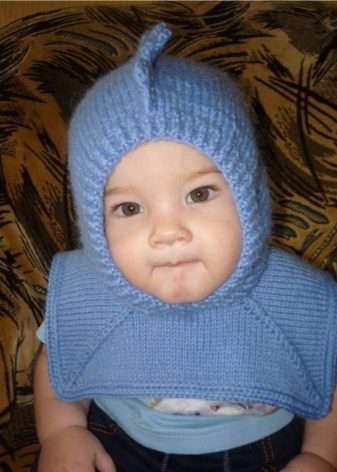
-
Beret. Knitted, felt, fleece, fur - this is a girl's option, both summer and for the colder time of the year.
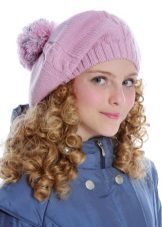
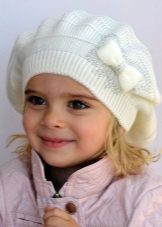
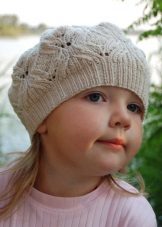
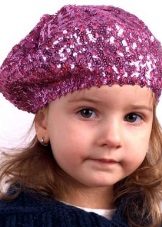
- Scarf hat. Not to be confused with a hat-helmet. A scarf hat, as a rule, has a long occipital part, which wraps around the neck. Of course, such a spectacular model is more suitable for older children.
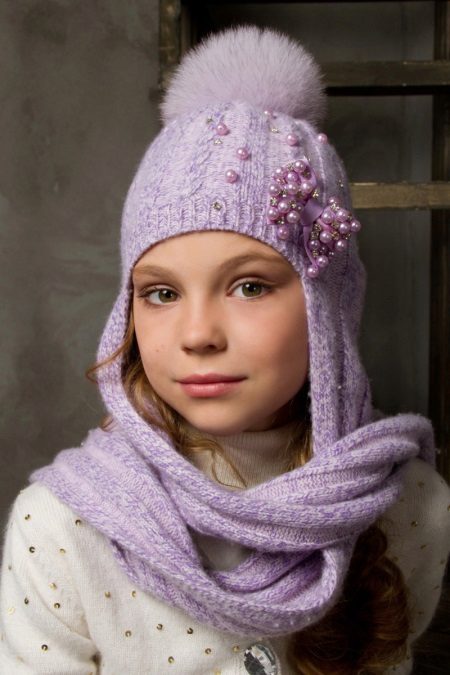
-
Cool, hats that are not like anything - in the spirit of the cartoon about Asterix and Obelix (in the form of a Viking helmet, with horns and braids), in the form of a gladiator's helmet (with a wide belt rising to the chin) or a knight (with rising and falling in case of cold weather "Visor"). Funny hats in the form of animals (giraffes and bees, ants and cows, cats and bunnies). Funny hats with crowns or hats that mimic ponytails or pigtails.

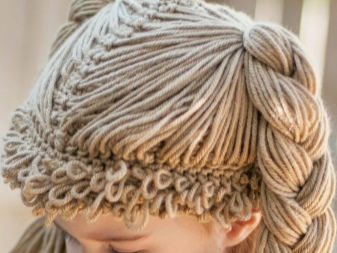
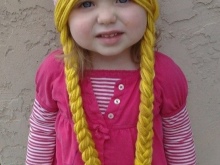
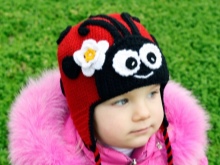

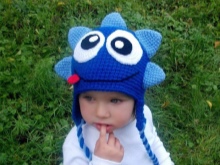

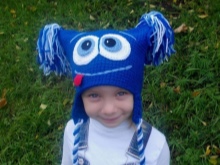
-
Double hats. Very warm, for greater confidence of parents in the safety of a precious child.
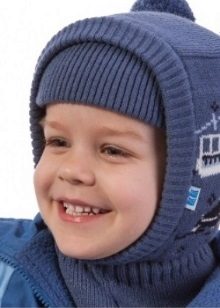
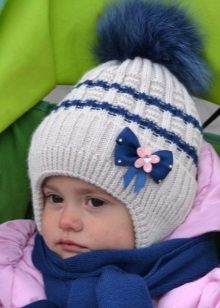
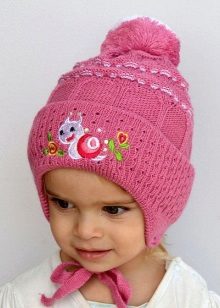
- Hats with a visor. A handy item designed to further protect your eyes from cold wind and rainfall.
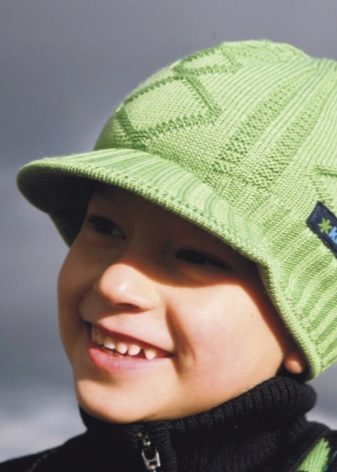
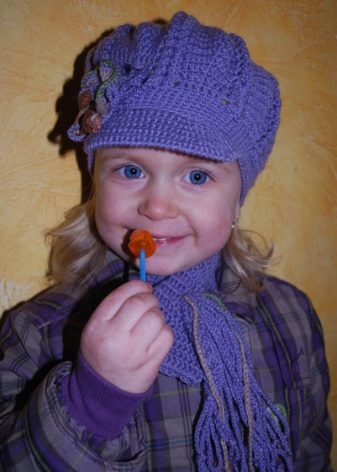
-
Hats with a lapel. Cute in themselves, guaranteeing even greater comfort due to double frontal insulation.
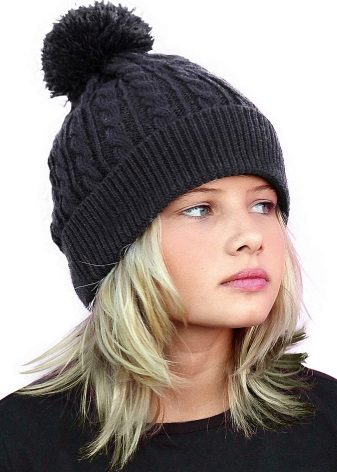
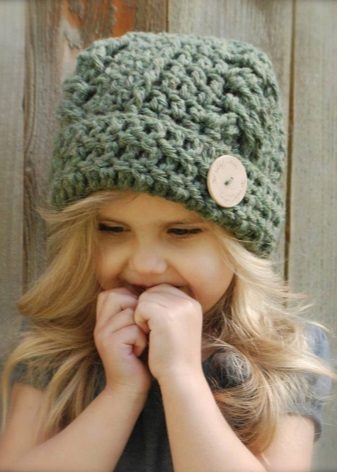
-
Caps with an ornament. As well as adults, they are well-deservedly popular, as Norwegian jacquard or lazy patterns are strongly associated with both small and large happy new year, Christmas tree and gifts.
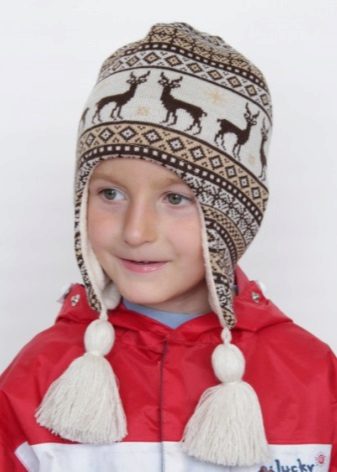
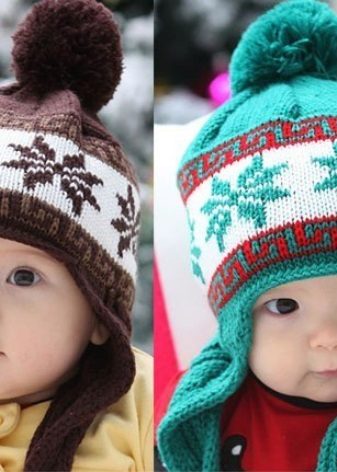
-
Hats complete with a scarf. One of the most popular types, which will provide the child with warmth and comfort combined with a beautiful and stylish look.
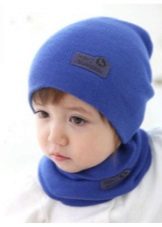
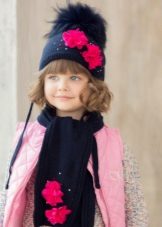

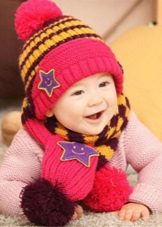
- Panama. Lightweight summer hat with small margins of textile or yarn.
- Cap. Headgear with a visor. One of the most popular varieties is a baseball cap.
- Bandana A scarf tied in such a way as to cover the forehead. Stylish option for advanced parents and a fashionable child.

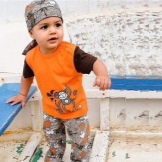
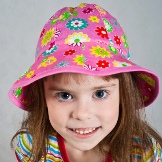

In addition, the caps can be with ties, with ribbons, buttons, buttons ...
Material
For the manufacture of children's hats, they try to use only natural materials.
-
Yarn. An excellent and warm option for any time of the year is wool, depending on what kind it is and what thickness of yarn is chosen. The disadvantages of wool include the possibility of discomfort when wearing (when choosing a woolen hat, pay attention to whether it is prickly), the possibility of an allergy in a child, the difficulty of leaving (clean wool often quickly rolls and sits down after washing). As an option, try a hat made of the so-called wool mixture (wool with acrylic in equal parts). Caps made of cotton, bamboo, grass, weaved yarn are perfectly suitable for a warmer season.

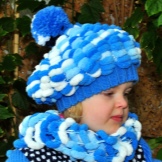
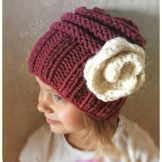
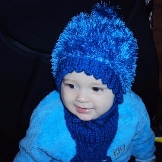
-
Fur. Natural fur (rabbit, raccoon, arctic fox) is a wonderful and beautiful material for a baby hat; you just need to pay attention to the conformity of such a hat to the current weather conditions so that the child does not overheat, because sweating in a hot hat makes it easier to catch a cold. Sometimes you can meet a children's knitted fur hat.This is a very interesting option, but the reverse course of events is possible - the child may freeze in such a model, since it is more easily blown by the wind.
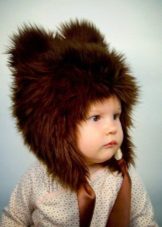


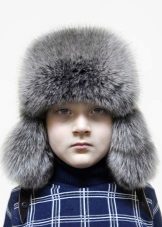
-
The cloth. Fleece, cotton, knitwear, jeans. They make fun hats that you can make yourself with the involvement of children as interested persons.
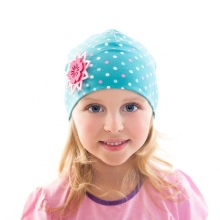
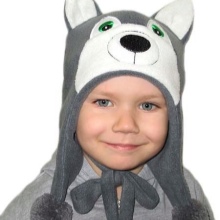

Suede, leather. Basically, these materials come as a top for earflaps.
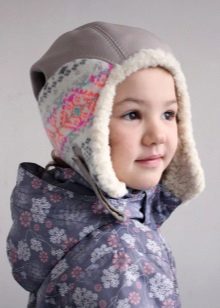


They try to use artificial materials for the manufacture of children's hats not very often, since they breathe poorly and have not the best heat-insulating properties.
Color
The color of the headgear, under equal other circumstances of choice, should be in harmony with the rest of the clothes. Traditional colors for very young children - pink for a girl and blue for a boy - are still popular among parents, and indeed the pastel color scheme is perfect for newborns.
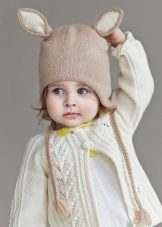

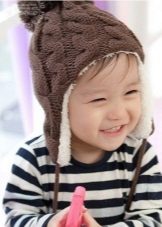
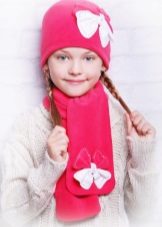
Older children prefer more saturated colors: yellow, orange, bright blue, green, in which the children themselves become like bright open flowers. White hats are very beautiful, but, of course, not very practical, especially fur hats.

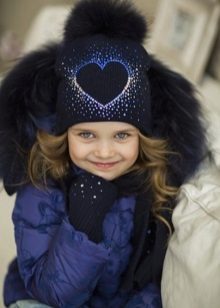
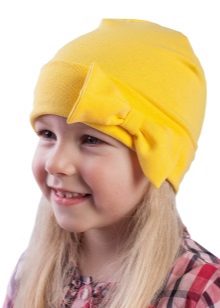
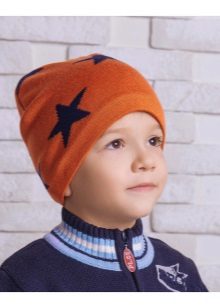
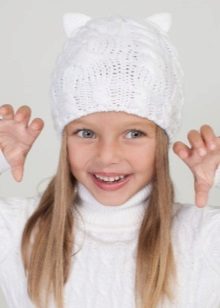
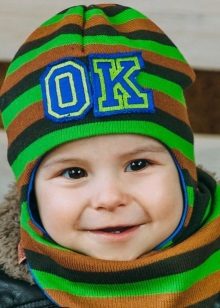
Teenagers value the right to choose on their own both the type of headgear (and sometimes its very presence), and its color. In this case, a reasonable compromise is important between the sometimes rather contradictory requirements of an almost adult child (from acid shades to gloomy monochrome tones) and parental care about his health.

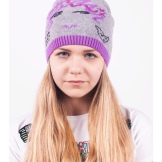
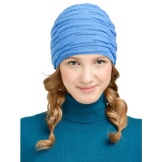
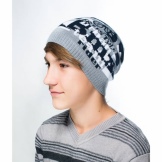
Patterns
As before, knitted children's hats with patterns are very popular - intricate arana, elegant lace, always fashionable jacquard, funny pictures. Now on sale there are a huge number of different types of yarn, from which it is guaranteed to turn out a unique children's hat if someone in your family knows how and loves to knit.
Well, if no one knits in your family, then the textile industry will come to the rescue - you just have to choose the one that your child will like and will allow you to be calm.

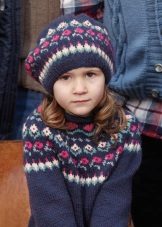
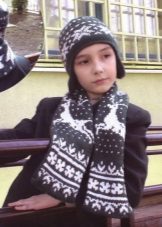
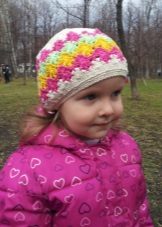
How to choose?
If before, when buying a hat for a child, parents often had nothing to choose from, so one that fit the size was purchased, now the situation has changed dramatically. Choosing a hat for your child (or with it) you, first of all, determine the style and colorand then you’re already looking for the right size (sew, knit or buy).
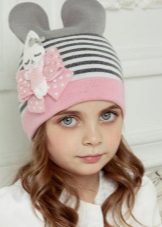
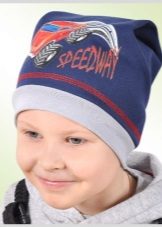
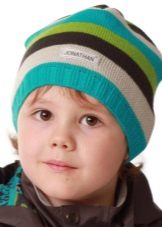

Correctly determining the size of a child's headgear will help to avoid completely unnecessary trouble - from excessive pressure on the head (in case of too small size) to the notorious "blowing in the ears" (if the size is determined incorrectly up). Equally important is the correct choice of the size of the cap for the newborn - if the cap is too large, then when you turn the baby’s head, the fabric can make it difficult to breathe freely.
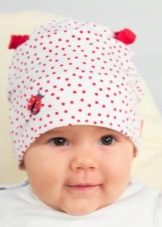

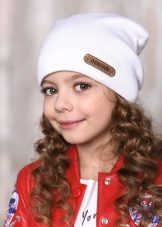
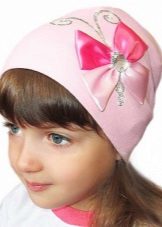
It is not difficult to determine the required size of a children's hat - you just need to measure the circumference of the child’s head with a centimeter tape over the eyebrows, ears, capturing the most convex occipital part. Actually, this is the size of the future cap. Nowadays, the practice of marking manufacturers of children's hats with an indication of the age for which a particular product is designed is spreading more and more, but these are quite average values, and for anyone it is not a revelation to say that all children are different, therefore, “it is necessary to measure”.
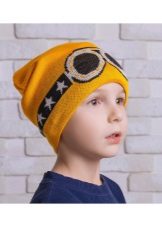
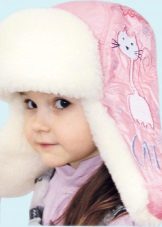
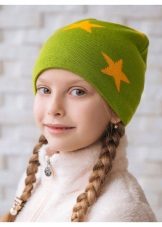
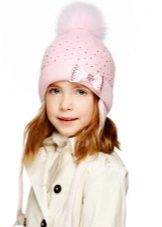
Unfortunately, you can’t always try on a hat. The child may be too small for fitting (up to a year), or a hat is bought in the absence of the child or, which is now very important, in the online store. Knowing the head circumference, height and age, you can correlate these data with the data of standardized tables (for example, look at the seller or on the Internet) and adjust them, if necessary.
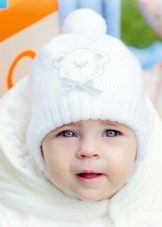


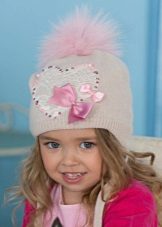
-
For example, you decide to buy your favorite two-year-old hat.You know the circumference of her head, look at the table and determine that, most likely, she will need 49 size. However, in the same table you see that the data are given taking into account the average height at this age of 86-92 cm, and your baby is very tiny, and even a summer hat - then it is better to order 48 sizes. If we were talking about a winter hat, then we could stop at 49, since it’s better to buy warmer options so that it doesn’t put pressure on your head and, if necessary, you could put on another, more easy.
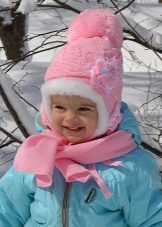
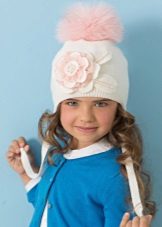
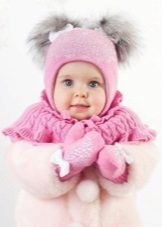
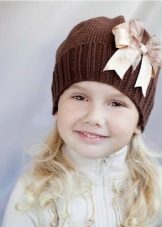
Fashion trends
The classic options for children's hats, of course, do not give up their stable positions, but all bOriginal models and colors of children's hats are gaining great popularity.
- What could be funnier than a cute baby? Only a baby in a funny hat imitating two luxurious ponytails!
- He visited us ... giraffe? Giraffe? Giraffe? In general, the little daughter of a giraffe.
- A completely non-standard option and an interesting solution is a felted hat with fox ears and in the corresponding color scheme.
- And here comes the formidable future Viking!
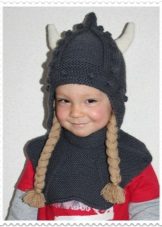
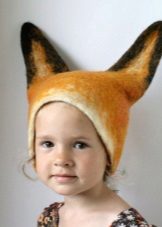
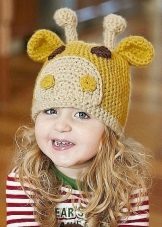
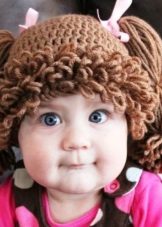
Stylish looks
-
Mickey Mouse for a walk.
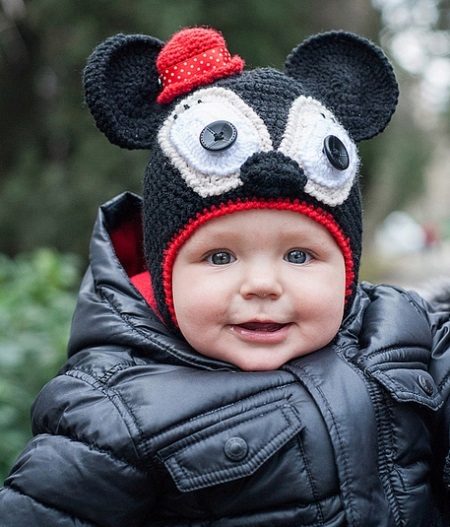
-
Just a cat.
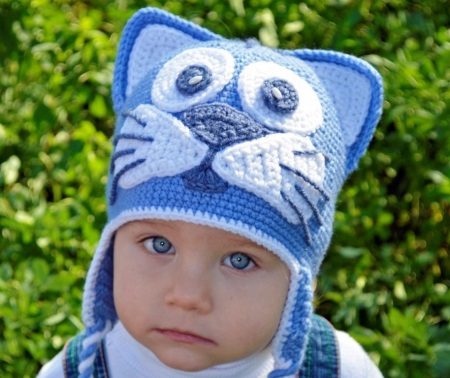
-
Teddy bear with funny ears.
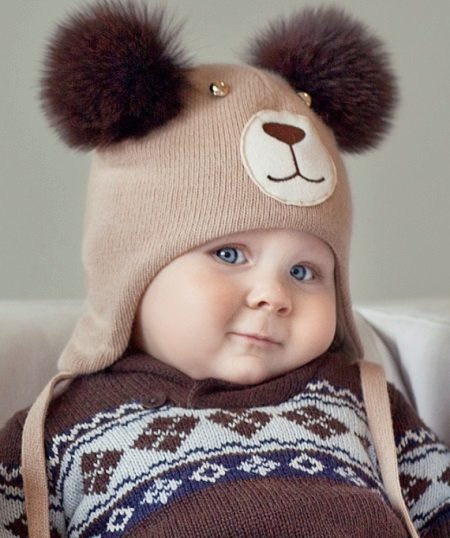
-
Many pompons do not exist.
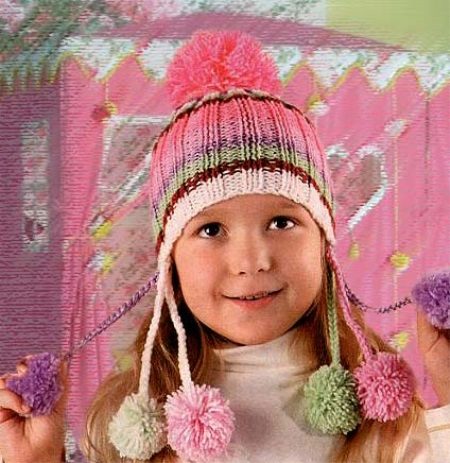
-
Stylish, fashionable, noble!

-
Absolutely amazing fox and no less amazing bonnet.
